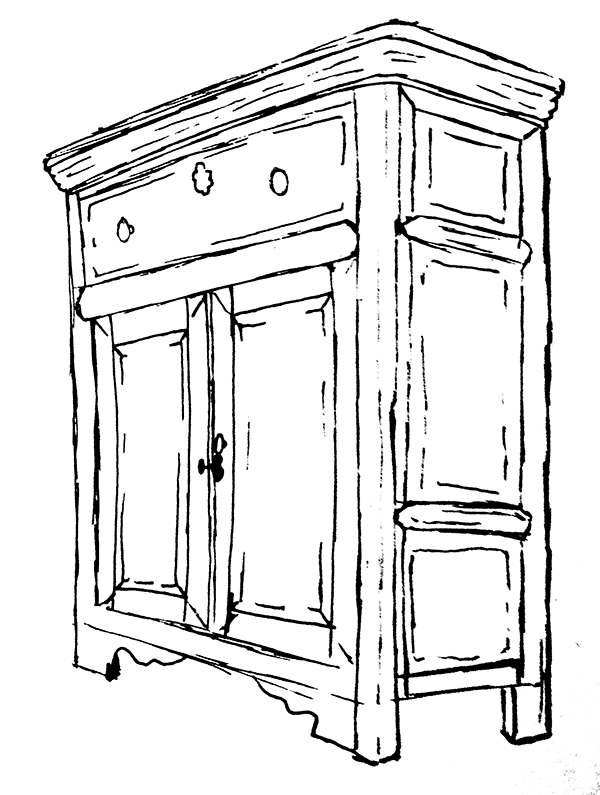Antique wardrobes have a long and fascinating history, but they didn’t begin as the furniture we know today. In fact, the wardrobes we’re familiar with today didn’t appear until the mid-late 1700s. Before this time, clothing was stored in similar furniture pieces known by different names.
Let’s take a closer look at the history of antique wardrobes to see how this furniture evolved.
The Middle Ages
During the Middle Ages, clothing was stored in coffers or low chests. These were practical pieces of furniture that could be used as storage, a seat and in some cases, a bed. The earliest versions were constructed from tree trunks, but were soon replaced by the more versatile method of using six boards nailed together. Many of these chests were made from oak because it was so plentiful and durable.
Late 15th– 17th Century
By the time the late 15th century came around, panel and frame construction had been introduced. Around 1600, the first crude drawers were also introduced. Early drawers were known as drawing boxes or tills and were initially built into the chest. These were known as “mule chests,” and they became quite common by the 17th century in England. They featured either drawers in the base of the chest, or drawers extending halfway up the chest.
By the mid-17th century, mule chests had begun evolving into chests of drawers. These were not like the chests of drawers we know of today. Two doors covered the front of the drawers, which made them more of a combination of double wardrobes and chests of drawers. Nevertheless, the early version of this classic piece of furniture was established by the time of the Restoration.
Tallboys and Early Wardrobes
Highboys, as they were called in America, were the next major development in the evolution of the wardrobe. These were, essentially, elevated chests or chests of drawers. Elevating the chest made it easier to reach the bottom drawers. The tallboy was an extension of this idea. Simply put, these were chests of drawers over another chest of drawers. While they conserved space, it was very difficult to reach the top drawers without standing on a step ladder or chair. Some tallboys could be separated into two different parts for easy transport, similar to the antique wardrobe which were made to dismantle.
Tallboys were commonplace in Gregorian households during the early 1700s, and the only piece of furniture that rivaled it was the wardrobe, also known as an armoire or clothing press. During the late Gregorian period, single wardrobes had shelves in the upper section, which were covered by two doors, and a lower section with a set of drawers. Larger wardrobes had grand wings on each side that provided a place for clothes to be hung.
In early America, antique pine wardrobes were used as closets in rural homes that did not have formal closets.
The Victorian Era
During the Victorian Era, wardrobes would evolve once again from a linen press with drawers underneath. Full-length pieces had doors that extended from top to bottom, much like Eastern European wardrobes. The trays and shelves that were inside previous versions of the wardrobe were replaced by hanging space and are very similar to the wardrobes we still use today.
You can see all the the wardrobes we currently have for sale in our antique pine wardrobes category.


















